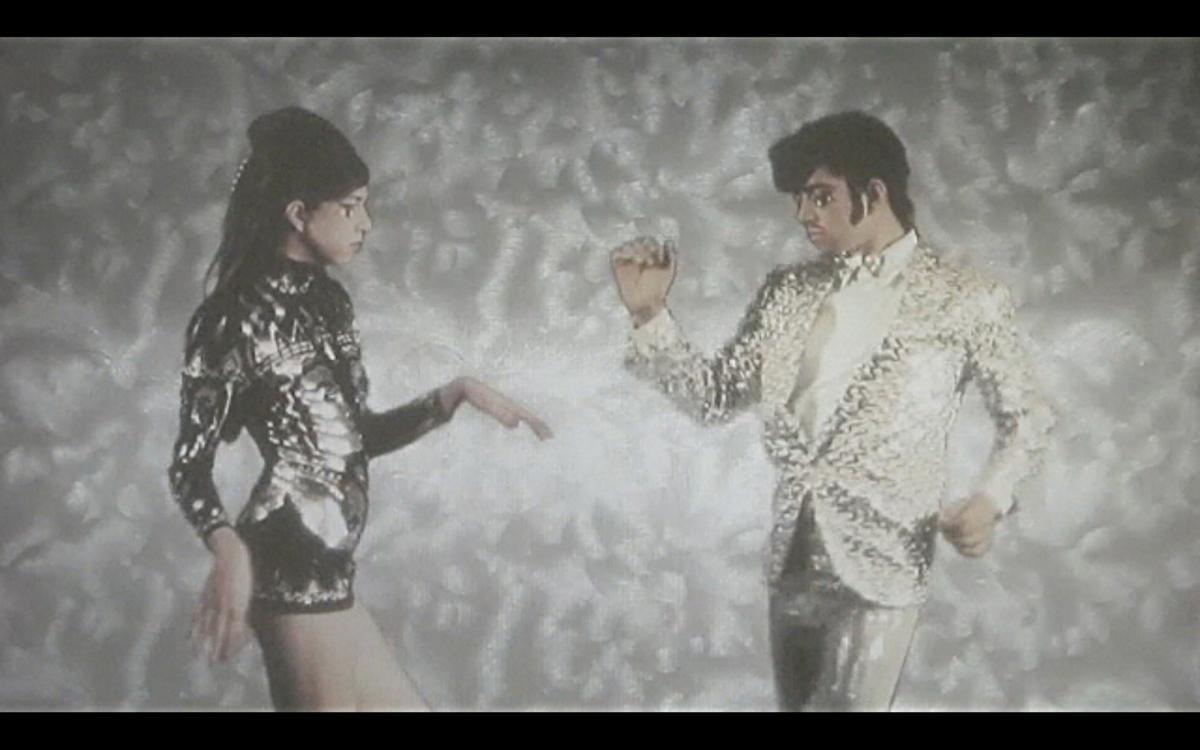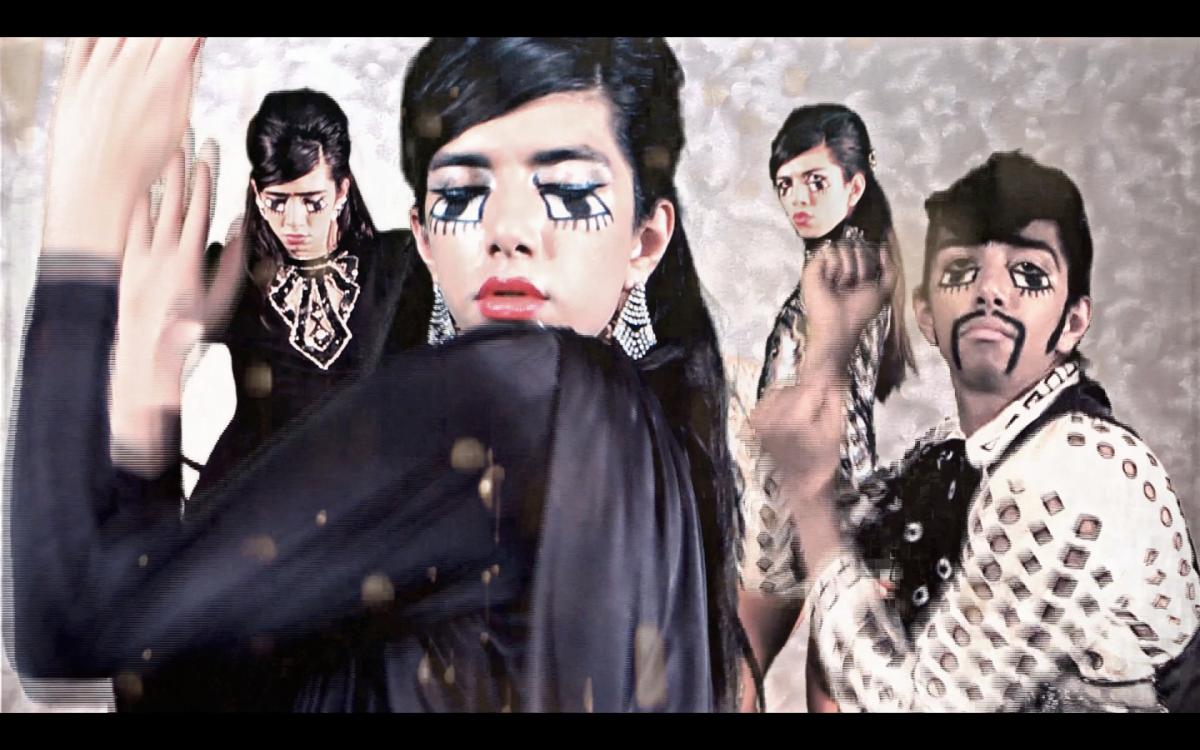How we relate to music is part of how we relate to ourselves and each other, and that is also part of contemporary American life. Joyfully embodying this is Martine Gutierrez’s Clubbing, part of the Smithsonian American Art Museum’s collection of time-based media art. In a gauzy-gray dream space, we hear the satisfying clonk of a wood block keeping steady beat and the electric fuzz of synthesizer chords which open the soundtrack for the work. A central figure, in a sparkly black dress with long black hair, coyly peers over their shoulder, and then turns to face the camera. The video cuts to another similarly framed figure in a light glittery jacket and tie with close-cropped hair, swiveling from back to front to meet the viewer with a flirtatious smile.
As the music continues, new couples are introduced—all wearing classic mid-sixties, mod-influenced looks mixed with Latinx details. Casting herself into roles that read as three men and three women paired up as heterosexual couples, six dancers crisscross and boogey down in a pattern that connects their movements but leaves plenty of room for individual expression.
Though on first glance she appears to present heterosexual pairings, Gutierrez's layered drag performances open a kaleidoscope of queer possibility. Filmed through gauze, the hazy indefinability of the locale evokes the idea of queer nightclubs as utopian zones, havens from a dangerously divisive society, since utopia means "no place" in Greek. Celebrating the joys found there, Clubbing stands as an ode to the creativity and liberation of dance floors and their importance as places for self-discovery, interpersonal harmony, and nonconformist community building.
In her own words, Gutierrez is "driven to question how identity is formed, expressed, valued, and weighed as a woman, as a transwoman, as a Latinx woman, as a woman of Indigenous descent, as a femme artist and maker."
She claims total control of every aspect of her projects, filling every role in front of and behind the camera. All six of her personas are made into distinct characters thanks to hair, makeup, and costume design by Gutierrez. The original score was written by the artist, composed after watching the choreography she created and executed multiple times and shot from many angles in front of a green screen alone in her studio. Splicing, compositing, and cleaning up these layers of performance, Gutierrez’s skillful editing and postproduction effectively deliver on her vision, transporting viewers to another dimension where all these unique personas are believably, simultaneously moving together. It all comes back to Gutierrez, alone in her studio, aiming to create a welcoming world for all.
This story is part of a series that takes a closer look at artworks in the Smithsonian American Art Museum's permanent collection. Text was drawn from the free, downloadable digital catalogue for the exhibition Musical Thinking: New Video Art and Sonic Strategies. Watch a clip from Clubbing.



















